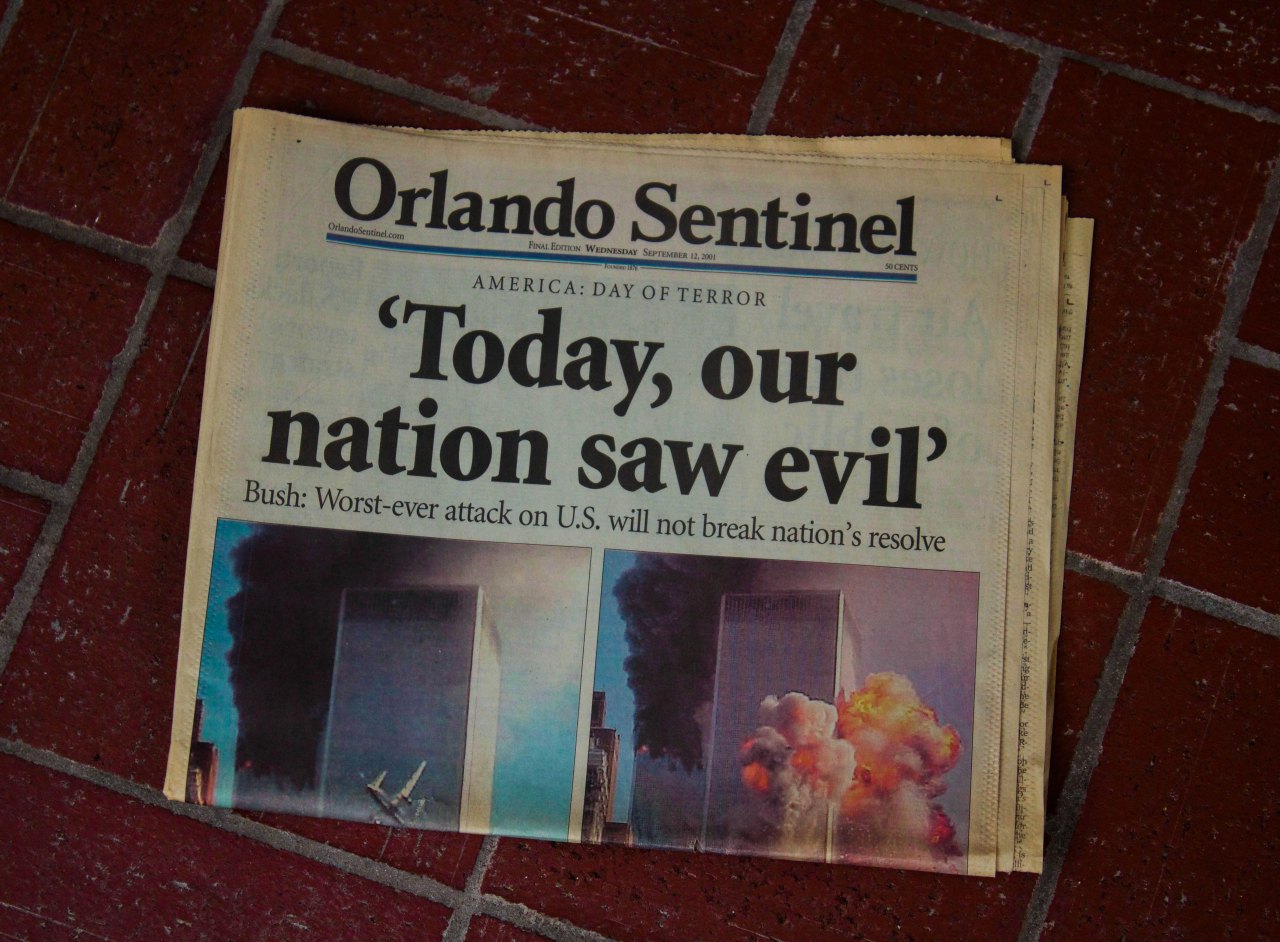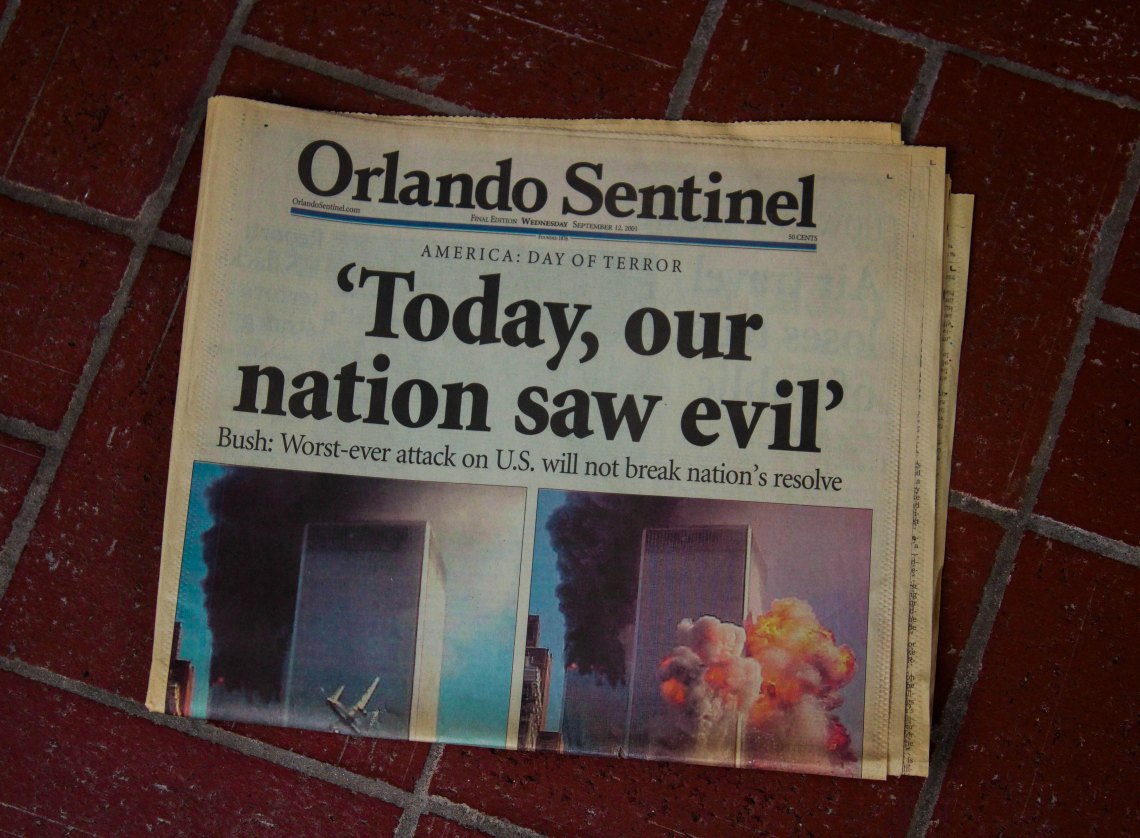We’re Living In The ‘Age Of Terror’ (But Honestly, It’s Mostly In Our Heads)
Neuroticism has spread to an entire generation. It’s not just an outbreak of paranoia, it’s a moral epidemic which sparks tension, which sparks anger, which sparks hatred.


There’s nothing new about terrorphobia, or is there? Despite threat narrative change, we can’t help but be shaped by it. We are still living in an age of terror, unknowingly cultivating a climate of unreason.
Just like love, fear is a rudimentary emotion that is rather obscure. It is also a part of our DNA package. As a receptor, fear exists within us for reasons beyond our will, unlike phobias that exist by our choice alone.
Phobias of some very low likelihood may be seen as less relatable, like taphophobia (the fear of being buried alive) or coulrophobia (the fear of clowns), yet terrorphobia is surprisingly relatable and human. Moreover, it has a cause of its pervasive, systematic persistence.
Even though terrorism in Europe has been in decline since 1980s, as stated by The Global Terrorism Database (GTD), ISIS keeps our terrorphobia alive, as it has been named the top threat in a total of 18 countries surveyed by Pew Research Center.
Given the extremely manipulative nature of terrorphobia, it distracts us from understanding ourselves and the world in general.
Terrorphobia was and still is part fabrication and part overreaction that to a certain degree serves the interests of politicians, acknowledges John Mueller in his book “Overblown: How Politicians and the Terrorism Industry Inflate National Security Threats, and Why We Believe Them.” He believes that a threat that is real but likely to prove to be of limited scope has been massively, perhaps even fancifully, inflated to produce widespread and unjustified anxiety.
John Horgan, a terrorist expert, backs up Mueller’s words, adding that Jihadists benefit from our fear too. “ISIS don’t just want to frighten us or get us to overreact, they want to be always in our consciousness so that we believe there’s nothing they won’t do.”
The rise of terrorphobia across the United States is a chilling echo from the nation’s past (Al Qaeda’s post 9/11) that misled us over the War on Terror and its fatalities: war profiteering, not to mention an all-time high government spending for both military and social purposes that contributed massively to the economic woe, adding $2 trillion to the debt as of the FY 2018 budget. “The immense costs, the self-inflicted wounds we suffer from it, and its permanently perceived inadequacy in comparison with the threats it forces us to imagine are more destructive of our national life than the damage terrorists are likely to inflict,” claims political scientist Ian S. Lustick at the University of Pennsylvania.
The fact that we, either individually or collectively, substitute fact-based thinking for a fear-based one can’t get any worse.
According to sociologist Barry Glassner, the author of “The Culture of Fear”, we have been sucked into the culture of endless intimidation, a projection of which is, for the most part, false. “The short answer to why Americans harbour so many misbegotten fears is that immense power and money await those who tap into our insecurities and supply us with symbolic substitutes,” he notes.
Media can change the zeitgeist overnight. Notwithstanding that the exposure to mass trauma (hence terrorphobia) through the media is indirect, it is socially contagious.
“Television news programs survive on scares,” Glassner adds, justifying concern over oppressive fears. “Disproportionate and unverified coverage in the news media plainly has effects on readers and viewers. On local newscasts, where producers live by the dictum, “If it bleeds, it leads,” drug, crime, and disaster stories make up most of the news portion of the broadcasts. All the more misleading, the newscasts consistently give the impression that murder and other serious crimes are rampant in places where they are rare.”
Regardless of the grim reality presented here and there, be it a terrorphobia or any other panic-fuelled phobia, it is a by-product of our negative core belief. The fear of germs or spiders is more likely to be tamed with exposure therapy, domesticating the fear of Muslims is surreal, since “pacifist Muslim” it still is a hard-to-grasp concept.
Neuroticism has spread to an entire generation. It’s not just an outbreak of paranoia, it’s a moral epidemic which sparks tension, which sparks anger, which sparks hatred. We can blame social, economic and political forces that have in a sense promoted conflict instead of cooperation, or blame state-owned media for instilling Islamophobia in the population whilst adding more fuel to the fire of extremism frenzy; however, each and every one of us remain quintessentially responsible for creating the mania by fearing our fear in the first place. We let the new bogeyman in our minds, therefore only we can let it out. ![]()




